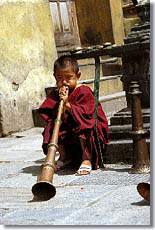|
||||||
|
Entertainment
Nepal is a heady mix, a fascinating land of ancient history, vibrant cultures and people, bio-diversity and scenic grandeur. From the magnificent snow-capped peaks to the North, the lesser mountains and midlands in the central region and the tropical jungles and fertile plains to the south, Nepal is a land that is largely defined by its geographical features. Located between China and India, Nepal also stands at the defining frontier of civilisation in this part of the world, showing a true multi-cultural, multi-ethnic amalgamation. Despite being wedged between two giant neighbours and civilisations, Nepal has produced a history and culture that is vastly different and unique.
People This varied landscape has one of the richest cultural landscapes. It has a population of roughly 22 million people. The heterogeneity is seen in the multiplicity of ethnic and caste groups who speak over 70 languages and dialects. Amazing cultural diversity for such a small country. The cultural heterogeneity is also linked to the landscape and can be seen in the way that different ethnic groups occupy parts of the country. |
|
|
The Gurungs and Magars live mainly in the western region, the Rais, Limbus and Sunwars inhabit the slopes and valleys of the eastern mid-hills while the Sherpas, Manangpas and Lopas inhabit the higher Everest, Annapurna and Mustang regions respectively. The Newars constitute an important ethnic group of the capital valley Kathmandu. The Terai has various caste groups like the Tharus, Yadavas, Satar, Rajvanshis and Dhimals. Brahmins, Chhetris and Thakuris are generally spread out over all parts of the kingdom. Landscape Nepal consists of several physiographic regions or natural zones – the four mountain ranges, the valleys located between them and the plains to the south of these ranges.
The plains or flatlands in Nepal consist of the Terai and the Bhabar. The Terai forms the northernmost part of the fertile Gangetic plain and extends into Nepal – a region that is called the `granary’ of Nepal, and a green expanse of paddies, mango groves, bamboo thickets and palm fringed villages. Between the plains and the first foothills is a narrow expanse of stony, shallow, immature soils called the Bhabar. Due to its porosity and it is unfit for agriculture. |
|

